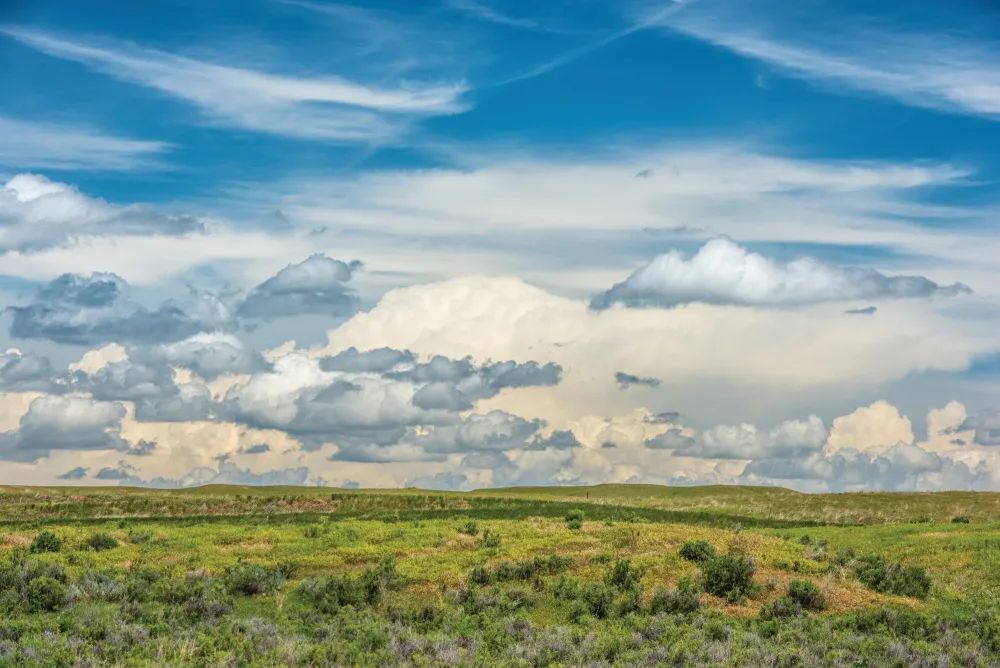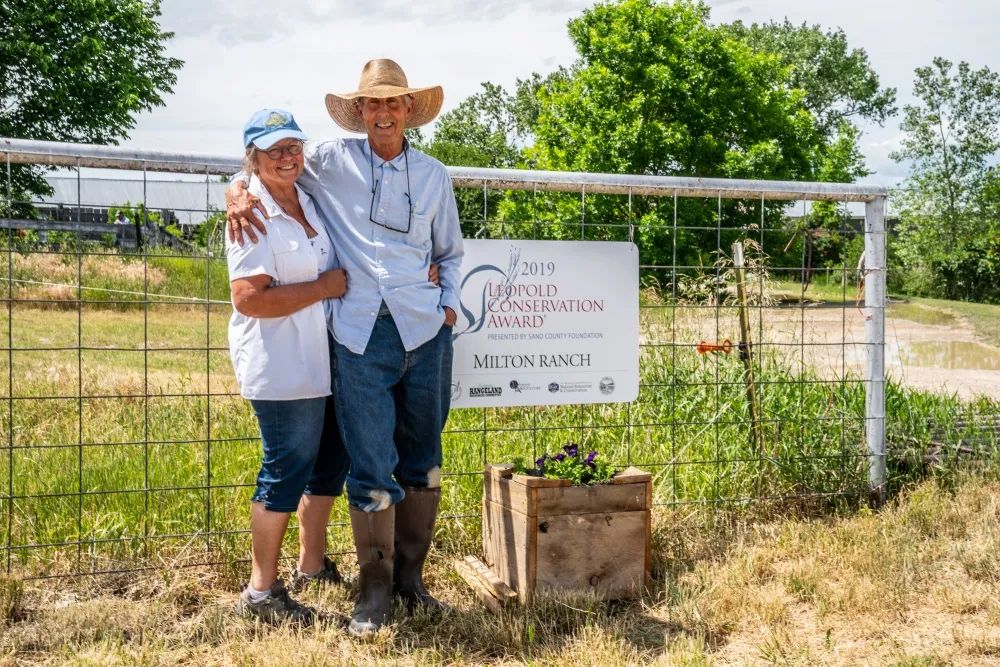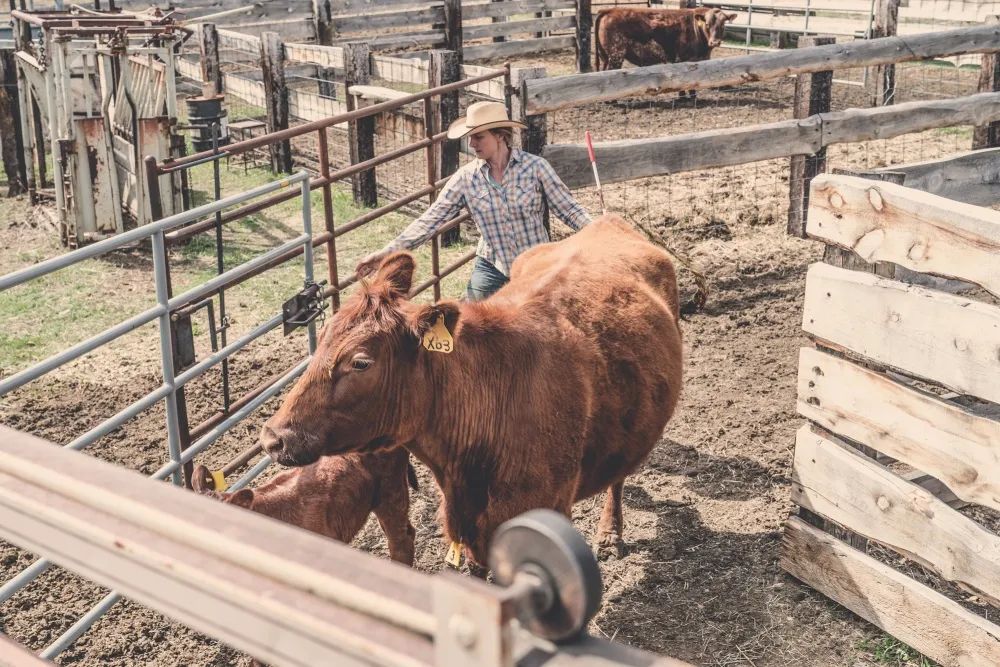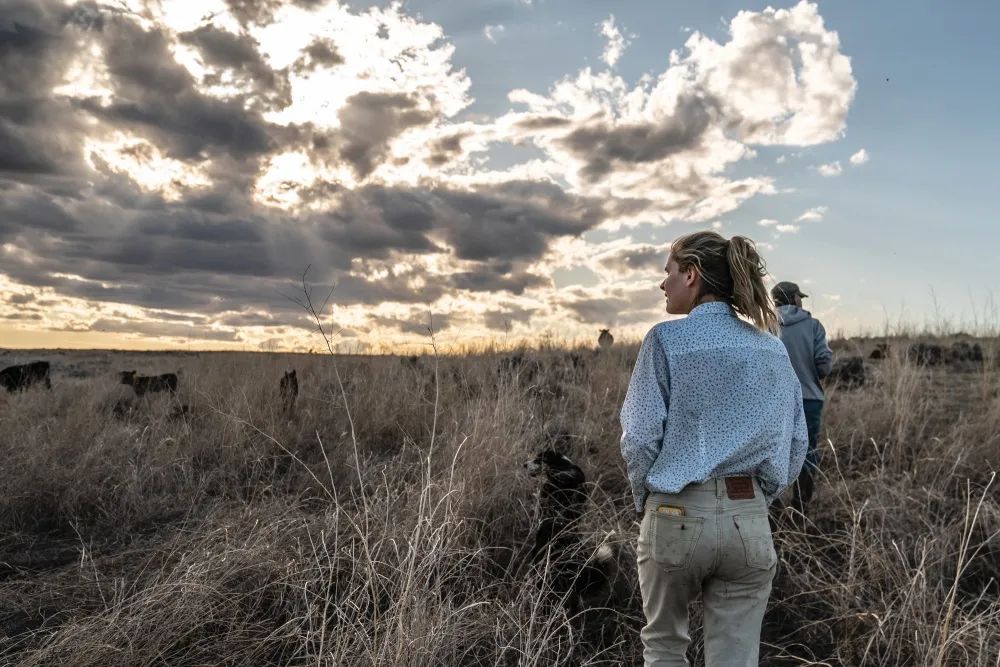
Bringing the Land Back to Life: The Past, Present, & Future of Restorative Grazing & Sustainable Beef
April 2022
by anna rogers | photos by alexis bonogofsky
I close my eyes and imagine this land as it once was – a sea of grass unfolding along the horizon, waving in the wind. Below the surface – a deep and complex root system shows the plants’ strength to face a brutal range of conditions. Above the surface – grazers roaming.
“Traditionally, prairie ecosystems had large grazing herbivores on them,” says Heather Bilden of Coulee Creek Ranch. “This ecosystem responds well to this. Grazers aerate the soil and fertilize it naturally. They have a positive impact as they move across the landscape. We’re tapping into this.”
A Look Back

Bill and Dana Milton of Milton Ranch
In 1978, Bill Milton and his wife Dana purchased some land in Musselshell County, fueled by a dream to make a living off the natural habitat. In 1985, the Miltons got to work on range management – integrating livestock on their land dynamically and creatively, yielding good performance and improving the habitat.
Mimicking the grazing habit of herbivores on prairie lands past, the Miltons’ cattle create high impact in one location and are moved to new pasture. The just-grazed ground is then given a long period of rest and recovery. Their method takes a nuanced and sophisticated approach to grazing – managing timing and stock density for 500 head of cattle.
“It’s taken us 40 years to figure it out,” Bill says humbly. “And let me tell you, the Miltons have made a pile of mistakes in this process.” His grin conveys at once the immense love he has for the work, the cows, the land, and most of all, his community.
Up & Coming

Heather Bilden of Coulee Creek Ranch
Just southwest of the Milton Ranch in Roundup, Bart and Heather Bilden also practice holistic management of the whole ecosystem on their land – Coulee Creek Ranch. Since 2016, they’ve taken four existing pastures and expanded into 14 smaller units for more equitable grazing across the landscape.
“Previously, there was minimal grazing away from the creek and river. Now with multiple pastures, we can incorporate longer rest periods following grazing, increasing organic matter and the health of the soil,” Heather says. The Bildens use a solar pump to move water to the highest point on their land; then gravity feed it into six tanks to provide water to all 14 new grazing zones.
In addition, the Bildens are planting cover crops in areas where the soil was less than optimal. These cover crops – a mix of legumes, grasses, and even turnips – add nitrogen back to the soil, break up heavily compacted soil, and stimulate microbes. The cover crops are then hayed or grazed, providing food for their cattle.
The Bildens recognize that they are newbies in a long game. They live humbly off the grid, using draft horses to work the fields and feed the cows in winter for lower inputs and less soil compaction. “The slower pace helps us pay more attention to what we’re hearing and seeing,” Heather says. And already, they see some changes.
So Far, So Good
For the Bildens, their five years of work are only a beginning. Immediately they’ve noticed that grazing was spread away from water sources, allowing areas along the creek to recover and grow more vigorously. For them, it’s about more than just the land itself. “We start with building healthy, functioning soils, and this cascades into greater plant diversity, habitat for animals, healthier herbivores, more nutrient-dense meat, and healthy human communities. Our health begins with the ecosystem health.”
In almost 40 years of ranching, the Miltons have witnessed firsthand the connection of land to community and conservation to economics. “We’re an integrated entity with the land. It’s not just a commodity to be used, but we have to make the conservation and economics work.”
The Miltons have built infrastructure, learned stockmanship, created relationships to utilize public land for grazing, calved in spring, hosted apprentices, won conservation awards, measured results, made a living, and paid off a ranch. And yet – “It’s the relationships that actually make life worthwhile,” Bill says.
“The world is complicated and messed up, but this is a place where grass, sky, cows, and families work together for the good of the community.” As Bill talks about his land, neighbors, apprentices, and hopes for sharing what he’s learned, it’s hard not to feel hope rising for a healthier world.
Foundations for the Future
The Miltons, Bildens, and Montana ranchers like them are dedicated and hopeful, but they’re not pie-in-the-sky pipe-dreamers. They seem to have perfected the balance of cowboy and changemaker – ticking off their daily chores while laying a foundation for the future of ranching.
At Coulee Creek, Heather and Bart are working to create a sustainable system of sustainable practices to pass on to the next generation, and in the meantime, feeding the community with locally produced beef and diversifying into pork and lamb.
Bill Milton is actively working with groups to develop large-scale rangeland monitoring in a way that can be scientifically and credibly shared with the public. On his ranch, he’s monitoring and documenting changes like soil biomass, pregnancy rates, and bird populations.

Bill Milton and his latest New Agrarian Program apprentice, Natalie, on Milton Ranch in Roundup.
He and Dana regularly host apprentices at Milton Ranch through the New Agrarian Program (NAP) of Quivira Coalition. The program partners with skilled ranchers and farmers to offer annual apprenticeships in regenerative agriculture, learning from expert practitioners in full-immersion professional settings. Alexis Bonogofsky, the NAP Northern Coordinator, lives east of Billings.
“We believe that learning by doing is the most effective way to learn ranching, and we believe this is the best way to transfer the knowledge from our mentors to a new generation,” Alexis says. The NAP started in Montana in 2019 with three operations and four apprentices. It’s grown to 17 ranches in Montana and Wyoming, collectively managing over 100,000 acres with 22 apprentices in 2021.
“With the national average age of U.S. ranchers and farmers approaching 60, and less than two percent of the U.S. population currently dedicated to producing food, it’s critical that the next generation of food producers and land stewards have sufficient training opportunities, specifically in regenerative agricultural practices,” Alexis explains.
The program carries the tune of hope into the future of ranching, raising the next generation of individuals who value and work in regenerative agriculture and intentional land stewardship.
“Give a gift, in reciprocity for what you have taken. Sustain the ones who sustain you, and the earth will last forever.”
-Robin Wall Kimmerer, Braiding Sweetgrass
Originally printed in the April 2022 issue of Simply Local Magazine
Never miss an issue, check out SLM's digital editions here!





